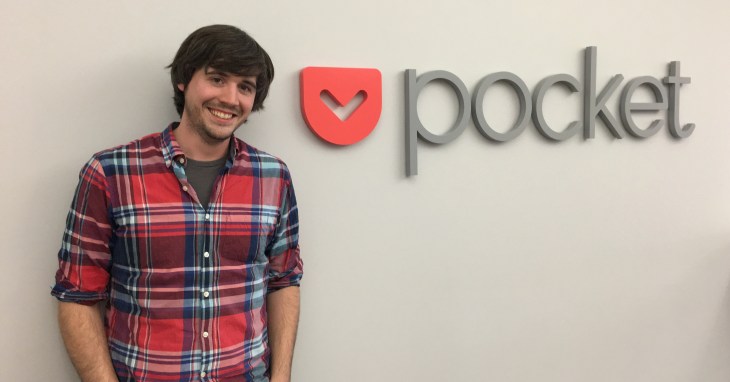<p class="dropcap">People love Pocket. Its 22 million registered users have saved over 2 billion articles. But there comes a time in every startup’s life when it must ween itself off venture capital and become a sustainable business. Today, after 9 years without ads, Pocket begins experimenting with sponsored content in its Recommended feed.
But these aren’t the crappy click-bait you see below lots of blog posts. “We’re being very choosy” Pocket founder Nate Weiner tells me. “We don’t want this to become the bottom of the barrel content.”
If Pocket can convince users that these articles would be worthy of appearing in its app even if it wasn’t sponsored, it could become the home for the future of content marketing. That should allow Pocket to stay free and independent.
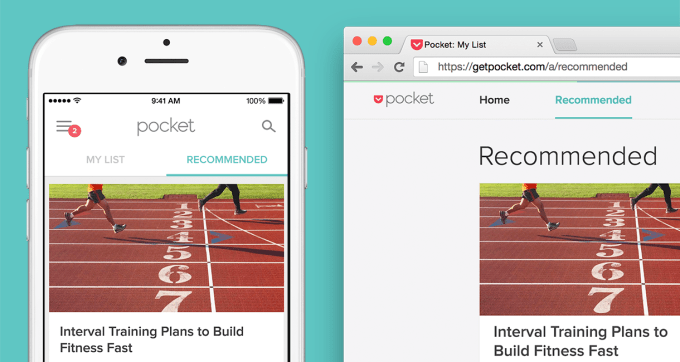
From Side Hustle To Startup
Pocket has always remained true to its founding principle of simplicity. Its app focuses on the list of articles you’ve saved from its browser and mobile OS extensions, integrations in services such as Twitter and Flipboard, and pasted links. You can cache these for offline viewing like on airplanes and consume the posts in a clean, stripped-down reader view.
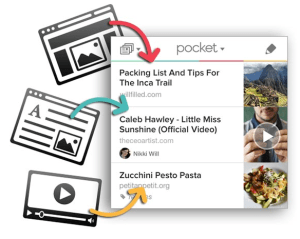 Weiner originally built Pocket in 2007 as a pet project. He was constantly emailing himself articles about becoming a better web developer, but then losing or forgetting to read them. When Lifehacker featured his “Read It Later” Firefox extension, it blew up. Soon Weiner was “spending 40 hours a week at my job, and 40 weeks at home working on all these ideas. Read it Later was like idea 37 out of 100.”
Weiner originally built Pocket in 2007 as a pet project. He was constantly emailing himself articles about becoming a better web developer, but then losing or forgetting to read them. When Lifehacker featured his “Read It Later” Firefox extension, it blew up. Soon Weiner was “spending 40 hours a week at my job, and 40 weeks at home working on all these ideas. Read it Later was like idea 37 out of 100.”
The iPhone’s launch suddenly meant people were reading clumsy desktop websites on mobile, and Pocket’s reader view was their savior. Finally in 2011, Weiner got serious, raised a $2.5 million seed from Foundation Capital and built out a team. It’s since raised another $12 million. Meanwhile, users sewed Pocket into their lives, with 50% of content saved eventually getting read.
Pocket stayed free, but eventually launched the $5 per month Pocket Premium tier with a few extra features like special fonts and a dark mode for night reading. But Pocket Premium was actually designed not for monetization but for distribution. Pocket was negotiating pre-installations with phone makers, and wanted to offer something as a gift to sweeten the deal. So it set up Premium and let phone makers give their customers six months of it free. Pocket Premium now has 170,000 subscribers.
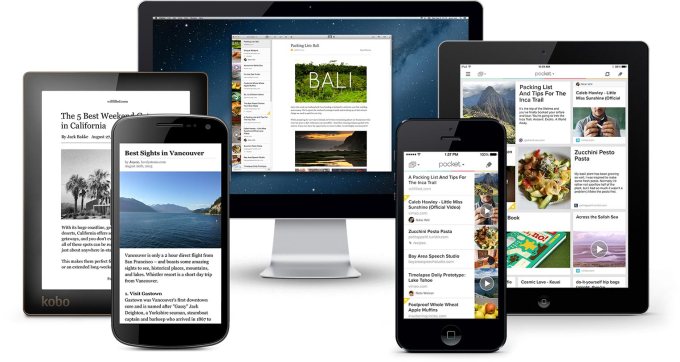
Beyond Banners
Pocket always planned to monetize with ads, but wanted to wait until it could show them in a way that didn’t suck. It started selling sponsorships in its email newsletter, and brands ate it up People were so used to having faith in what Pocket said was trending that they clicked the sponsor boxes too. Now Weiner says these emails bring in as much revenue as Premium.
To make the big bucks, though, Pocket would need ads in its app.
Thankfully, the death of the banner ad has inspired brands to get good at content marketing. No one wants a hard sell any more. Businesses know they’re better off informing or entertaining potential customers than shoving products down their throat. So they began commissioning How-Tos, punchy videos, long-form thought pieces, and high-design advertorials.
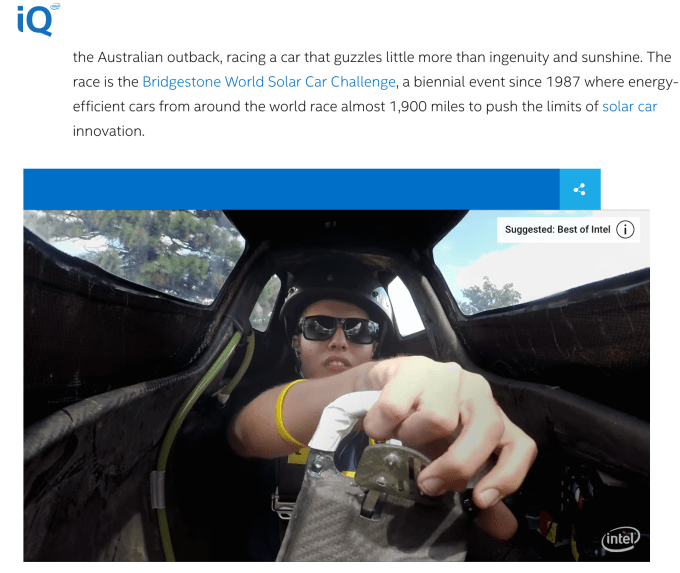
Intel turned this content marketing blog post into one of the first Pocket ads
The problem is that there are few high quality places to continuously promote this content marketing. That’s because every content app’s feeds move so fast. “On Twitter, great content is there for 10 minutes and it’s gone. On blog home pages, it’s there a few hours and it’s gone” Weiner explains. “But we see no reason why great content can’t live on for days.” Popular articles can see steady traffic for over a month on Pocket.
Late last year, the startup launched a second tab in its app for recommendations. After reading an article you saved, you could easily recommend it so it appears in the feed to your friends. But this algorithmically sorted feed also creates a space where it can insert its new sponsored content ads.
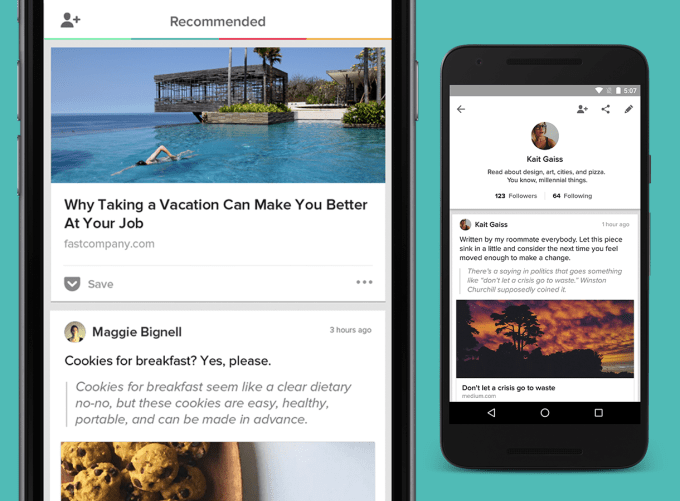
First up will be marketing blog posts from Slack and this one from Intel, “Student Solar Car Team Shows The Future Is Powered By Sunshine”. On the surface, it’s just an interesting solar car racing story full of photos, graphics, and videos. But the subtle message is that Intel’s server helps the team crunch its data, and Intel could help your business too.
Simply sticking this well-produced content on Intel’s little-known corporate blog IQ or letting it get lost in feeds would have been a waste for the company. Trying to force people to read it with ads on websites could feel annoying. But buying sponsored content space in Pocket puts it where people are already in the mood to read high-quality articles.
The ads will be sold on a CPM basis for roughly $50 for 1000 impressions. It will be up to the businesses to make content appealing enough that people click, though Pocket will help them craft the optimal headlines or tell them what content wouldn’t fit. “Someone’s Pocket is their content identity” Weiner says, so it has plenty of signals for targeting its ads.
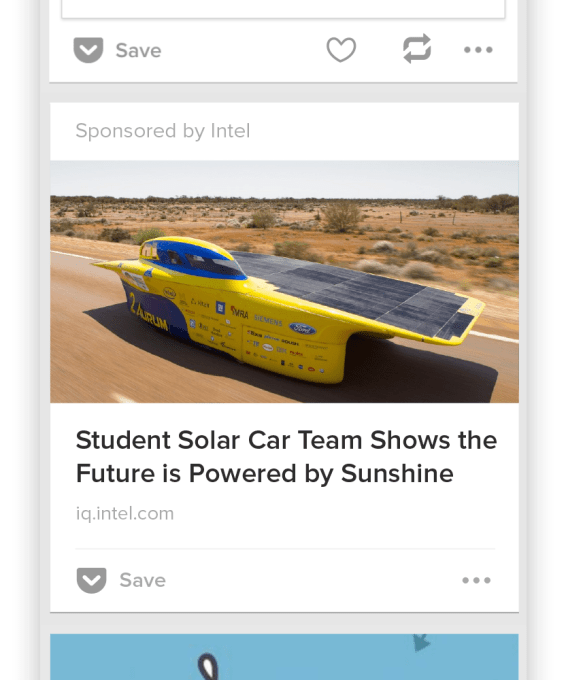
What Pocket’s ads look like
An added benefit is that these sponsored content posts can go viral inside the app. The Recommended feed already sees visits from 1/3 of Pocket’s users, an 8% to 20% click-through rate, and 10% of readers re-share the posts. People trust Pocket.
If the startup can accomplish anywhere near those numbers on the sponsored content, it could have uncovered a gold mine. Weiner estimates Pocket’s 2016 revenue run rate could be north of $10 million.
Plus, now it has a much better selling point for Pocket Premium since a subscription removes all the ads. Weiner jokes “Our biggest challenge with Premium so far has been that the free product is so damn good.”
The Omniscient Pocket
If you squint, you can see a bit of Netflix’s trajectory in Pocket. Weiner recalls how Netflix started as a place where you queued up DVDs to watch later. That helped it develop a world-leading content recommendation engine. Then Netflix used its insights into what people wanted to watch to create its own original content.
Now Pocket is using its understanding of what people read to design and surface ads worth clicking. It’s also similar to BuzzFeed’s strategy. Show content people love to read so they’ll give it the benefit of the doubt and read its sponsored content too.
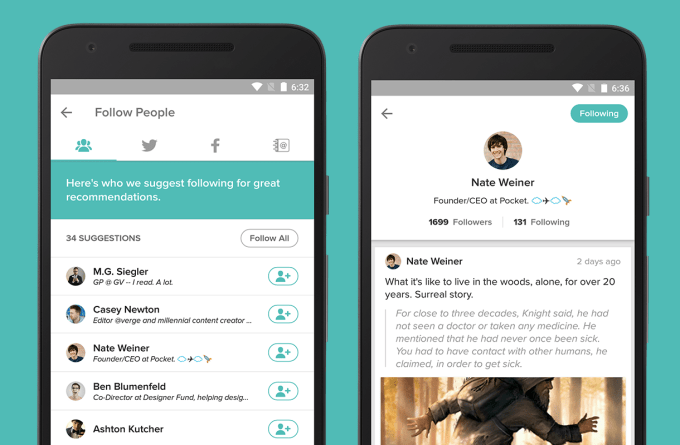
“We have this really conclusive idea of all the articles on the web worth reading” as well as what each individual prefers, Weiner tells me. That means it’s uniquely suited to solve the information overload problem.
There’s way too much great content being produced for anyone to read it all. The best we can do is stay glued to our Facebook and Twitter and other feeds. It’s exhausting. But since people save content to Pocket from everywhere, it can filter through everything, show you the best, and sometimes ask the publishers to pay.
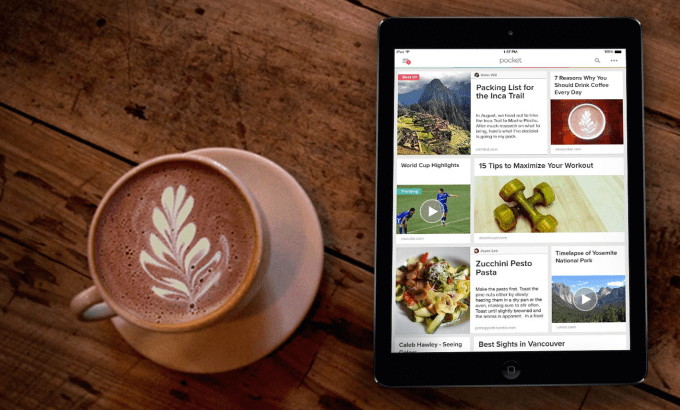
It make me wonder why Medium and Twitter aren’t dumping trucks of money on top of Mr. Nate Weiner to acquire pocket. An open read-it-later app would be the perfect companion to Medium, and Twitter desperately needs to learn how to algorithmically sort content.
Cloning Pocket hasn’t seemed to work for Facebook. The company acquired Pocket competitor Spool, melted it down, and reforged it as Facebook Save. But that siloed product just for storing what you find in the News Feed doesn’t seem to have much traction.
Hopefully, Weiner won’t sell. His app is at the intersection of fragmented content consumption, lean mobile apps, and sponsored content — some of the biggest trends in tech. Pocket seems like it has plenty of money-making potential up its sleeve.
